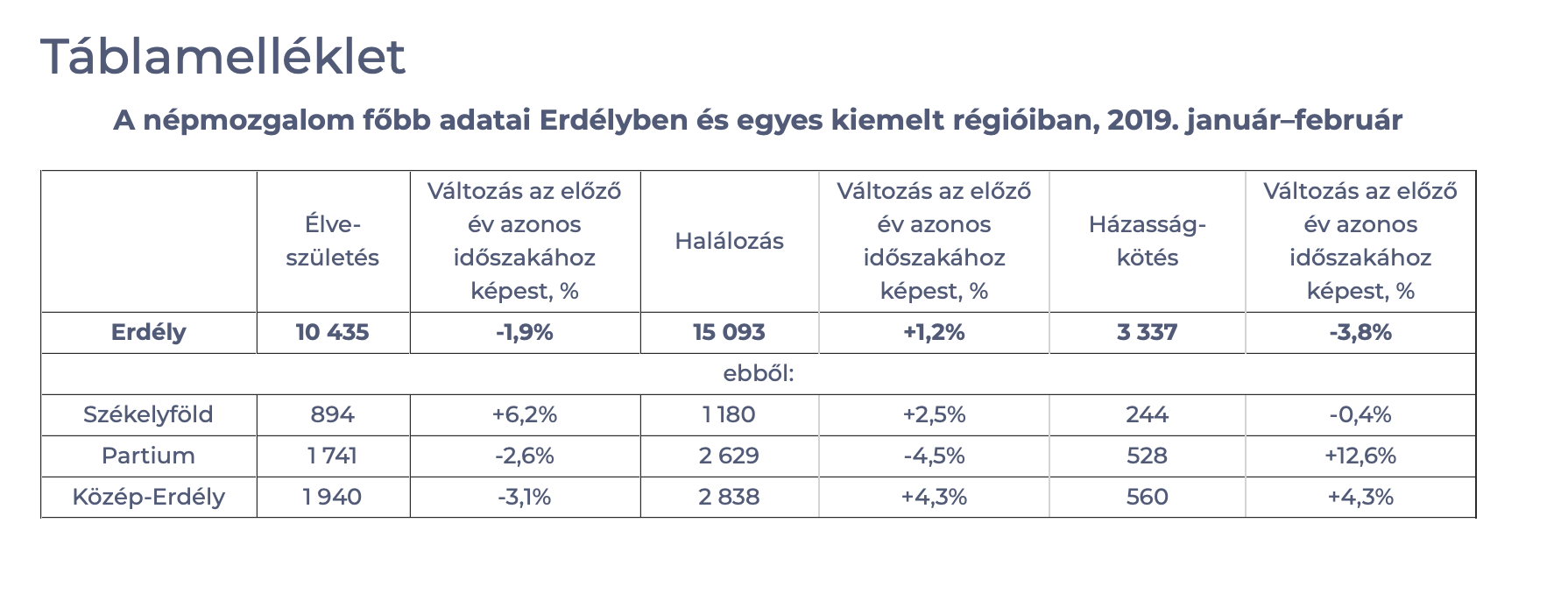In the first two months of 2019 the demographic decline sped up in Transylvania, except in Szeklerland, where the fertility rate was on the rise. In Transylvania the fertility rate dropped by 1.9% compared to the same period a year ago, and the death rate was 1.2% higher. On the positive side, the birthrate in Szeklerland was up 6.2% and the death rate was only 2.5% higher than in January–February of 2018, ErdélyStat reports.
The latest available data shows that 10,435 babies were born in Transylvania in the first two months of the current year, which is 204 (1.9%) lower than the number of live births registered in the same period of last year. The highest number of births were registered in Temes/Timiș County (1,144 babies), followed by Kolozs/Cluj (1,098), and Brassó/Brașov (978).

On the other side of the balance, there were 15,093 deaths recorded in the same period, 173 (1.2%) higher than in January–February 2018. When subtracting the number of births from the number of deaths, we find an alarming rate of demographic decline: during the first two months of the year, the region’s population fell by 4,658. The population is dwindling – just when looking at the birth-death rate only – and we didn’t include the number of people working abroad.
There has been a noticeable increase in the population in Szeklerland, however. Between January and February, 894 babies were born in Hargita/Harghita and Kovászna/Covasna counties, which is 52 (6.2%) higher compared to the same period a year ago. The death rate was 2.5% higher in the same period, with 1180 registered deaths.
The number of live births, however, shows that the demographic decline is slowing down in Szeklerland, although the number of marriages doesn’t seem to have increased.
ErdélyStat’s latest data shows 1741 births in Partium, which compares to 2629 deaths during the analyzed period, showing a slowdown in both metrics. An interesting aspect of this region is that the number of couples saying yes to marriage increased by 13% to 528.
Things don’t look bright in Central Transylvania (Maros/Mureș and Kolozs/Cluj counties): demographic decline increased by 25% due to lower live births (1940 babies) and higher death rates (2838).
Note: ErdélyStat uses the geographic term Transylvania in its broader sense, encompassing all regions formerly belonging to Hungary. These are Central Transylvania, Szeklerland to the East of it and Partium, the region bordering Romania.